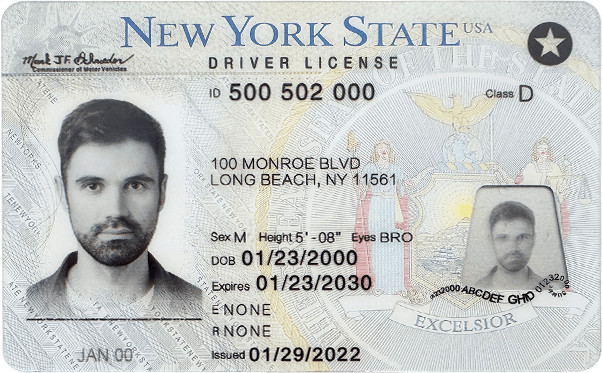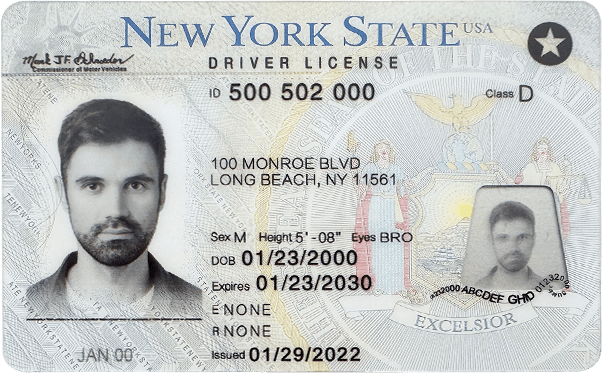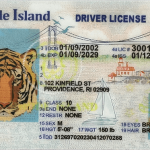Driving is an essential part of modern – day life, and a driver’s license is a crucial document that authorizes an individual to operate a motor vehicle. However, the existence of fake driver’s licenses is a concerning issue that law – enforcement agencies, businesses, and society at large have to deal with. Recognizing the telltale signs of a fake driver’s license is vital for various reasons, such as preventing identity fraud, ensuring public safety, and maintaining the integrity of the licensing system.
Physical Appearance
One of the first aspects to consider when suspecting a fake driver’s license is its physical appearance. A genuine driver’s license is usually made of high – quality materials. The plastic should feel sturdy and have a certain thickness. On the other hand, a fake license may be made of thinner, flimsier plastic that can be easily bent or damaged. For example, if you can flex the license too easily or it feels like it could tear with minimal pressure, it may be a red flag.
The printing on a real driver’s license is also of high quality. The text should be sharp, clear, and evenly spaced. The colors should be vibrant and consistent throughout the document. In contrast, fake licenses often have poor – quality printing. The text may be blurry, smudged, or have uneven spacing. The colors might appear faded or off – shade. For instance, the state name or the driver’s personal information may look pixelated or as if it was printed with a low – quality printer.

Security Features
Most modern driver’s licenses come with a variety of security features to prevent forgery. One common feature is a hologram. A genuine hologram is usually well – integrated into the license and has a three – dimensional appearance. It may display the state seal, a unique pattern, or the driver’s photo in a holographic form. Fake holograms, on the other hand, may be flat, poorly attached, or have a low – resolution appearance. They might also be easily peeled off the license.
Microprinting is another important security feature. On a real license, there may be small text that is difficult to read without magnification. This text could include the state’s name, some form of identification number, or other security – related information. Fake licenses often lack proper microprinting or have microprinting that is not up to standard. If you try to magnify the license and find that the supposed microprinting is not clear or is missing altogether, it could be a sign of a fake.
Some driver’s licenses also have embedded fibers or threads. These are usually visible when the license is held up to the light. The fibers or threads may be colored or have a specific pattern. A fake license may either have no such embedded elements or have ones that look artificial or poorly integrated.
Personal Information and Photos
The personal information on a driver’s license should be consistent and accurate. Check for any misspellings in the name, address, or other details. While a simple typo may not always indicate a fake license, multiple or obvious errors can be a cause for concern. For example, if the last name has an incorrect spelling that is not a common variation, it might be a sign of a forged document.
The photo on a real driver’s license should match the overall quality of the document. It should be clear, with the person’s features well – defined. The lighting should be even, and the photo should be properly centered within the designated area. A fake license may have a photo that looks like it was pasted on or has a different quality level compared to the rest of the license. The photo may also be of low resolution, blurry, or have a different color tone than the surrounding text and graphics.
Magnetic Strip and Barcodes
Many driver’s licenses have a magnetic strip or barcodes that contain the driver’s information. These can be scanned by law – enforcement or other authorized personnel to quickly access details about the license holder. A fake license may have a non – functional magnetic strip or a barcode that does not scan properly. If, when attempting to scan the license, the machine gives an error message or fails to retrieve the expected information, it is likely that the license is fake.
Common Problems and Solutions
- Problem: Difficulty in Identifying Holograms
Solution: Obtain a magnifying glass and learn about the specific holographic features of the driver’s licenses in your area. Different states may have different hologram designs. Familiarize yourself with the official descriptions and images of these holograms. You can also refer to the state’s official website or contact the local Department of Motor Vehicles (DMV) for more information. If possible, compare the suspect license’s hologram with a known genuine license. - Problem: Uncertainty about Microprinting
Solution: Use a high – quality magnifying device to check for microprinting. If you are still unsure, consult the DMV or a law – enforcement agency. They have the expertise and tools to accurately determine the presence and quality of microprinting. Some states may also provide online resources or brochures that detail the microprinting features of their licenses. - Problem: Doubts about the Photo’s Authenticity
Solution: Look for signs of tampering around the photo area, such as uneven edges or differences in the texture of the plastic. Compare the person in the photo with the individual presenting the license. Pay attention to details like hair color, eye color, and facial features. If there are significant discrepancies, it may be a fake. You can also ask the person to provide additional forms of identification for cross – verification. - Problem: Inability to Scan the Magnetic Strip or Barcode
Solution: First, ensure that the scanning device is working properly. Try scanning other known – good cards or licenses to test the machine. If the problem persists with the suspect license, contact the DMV or relevant authorities. They can manually verify the license information and determine if it is fake. In some cases, the issue may be due to a damaged or malfunctioning magnetic strip on a genuine license, but this should be investigated further. - Problem: Spotting Inconsistencies in Personal Information
Solution: Cross – reference the information on the license with other reliable sources, such as the individual’s social security card, passport, or utility bills. If possible, contact the DMV directly to verify the details. If the license has multiple or significant inconsistencies, it is highly likely to be fake. Law – enforcement should be notified in such cases.
Fake ID Pricing
unit price: $109
| Order Quantity | Price Per Card |
|---|---|
| 2-3 | $89 |
| 4-9 | $69 |
| 10+ | $66 |



